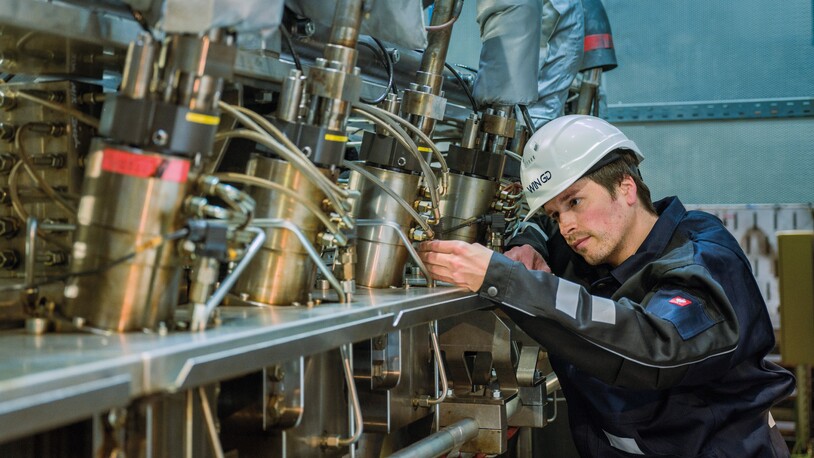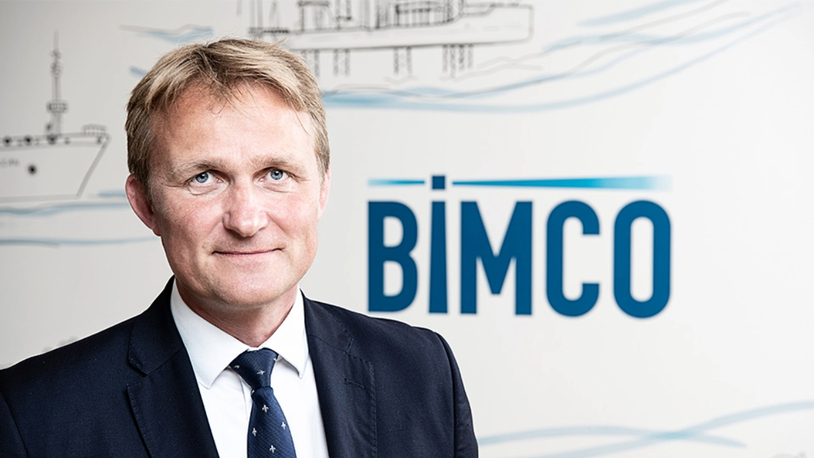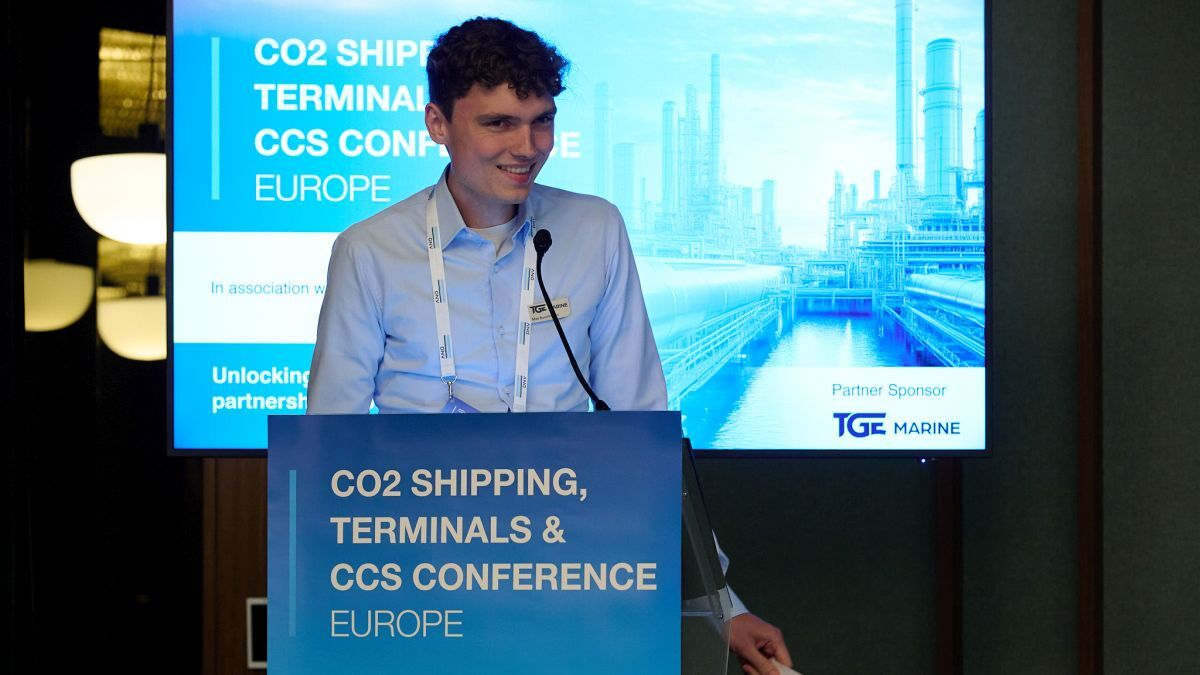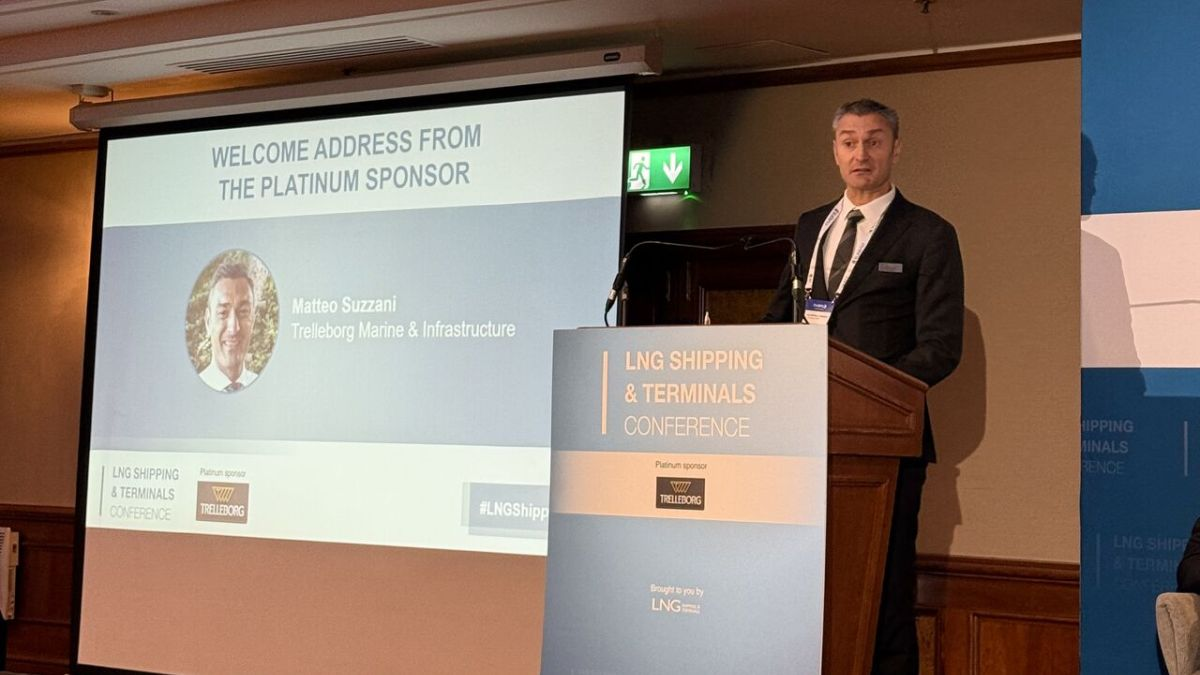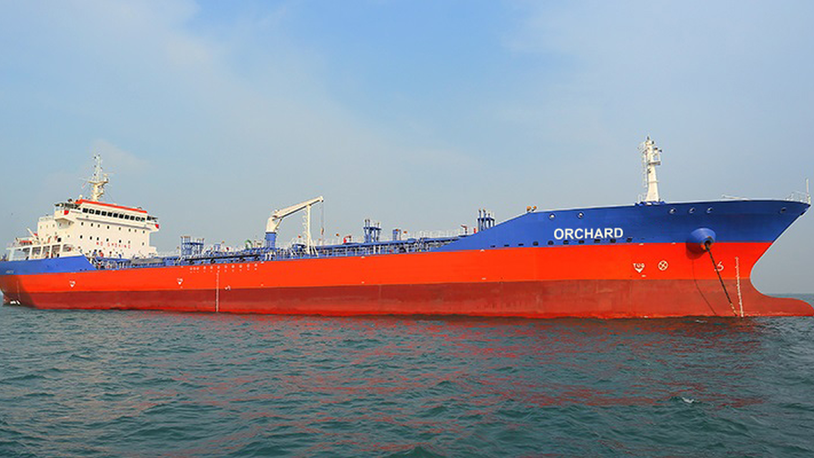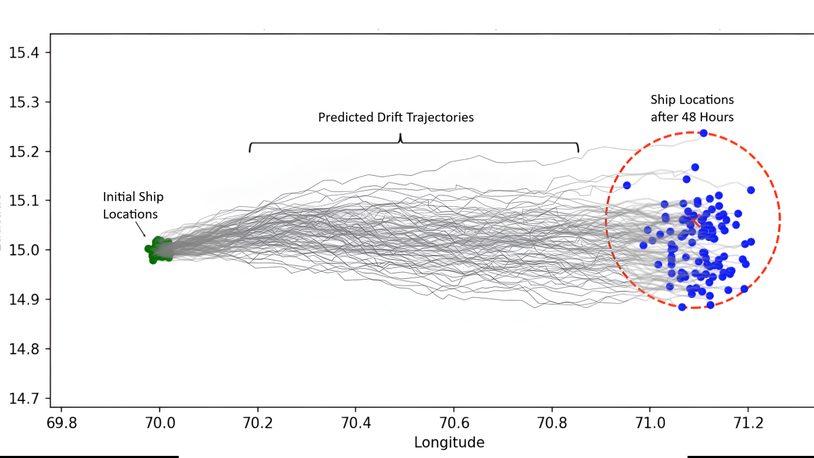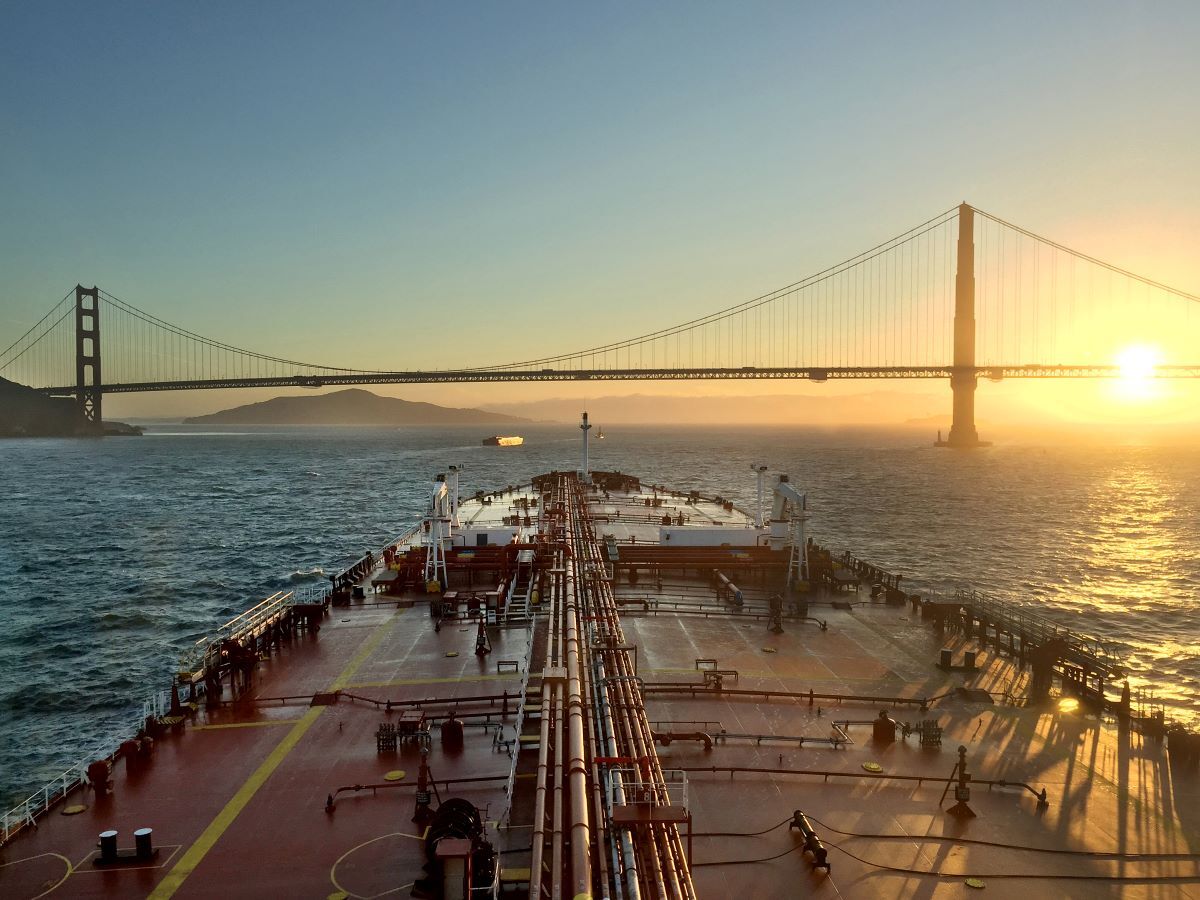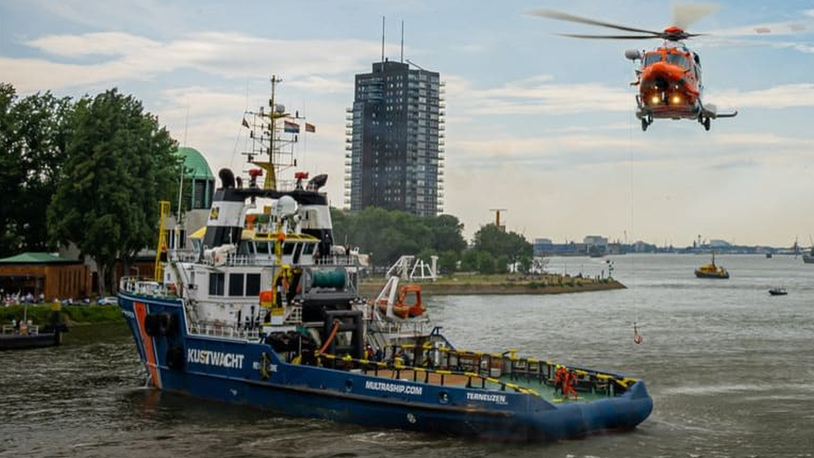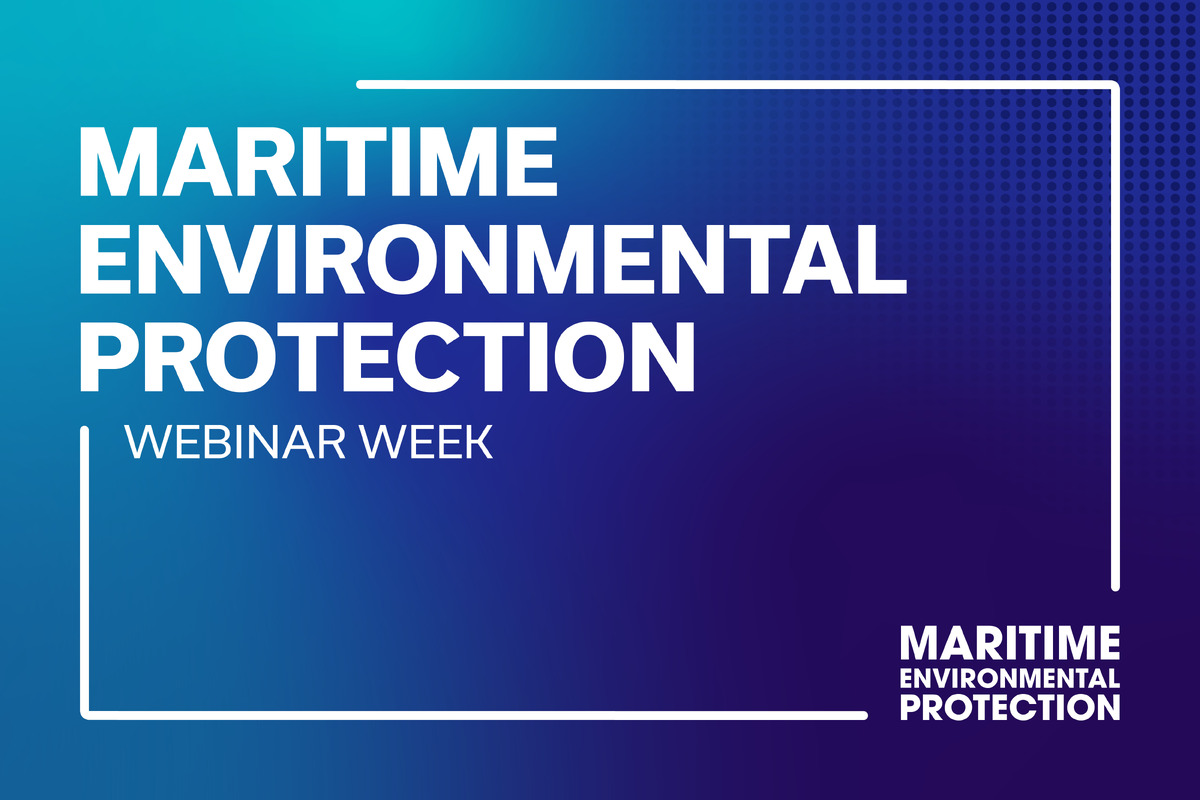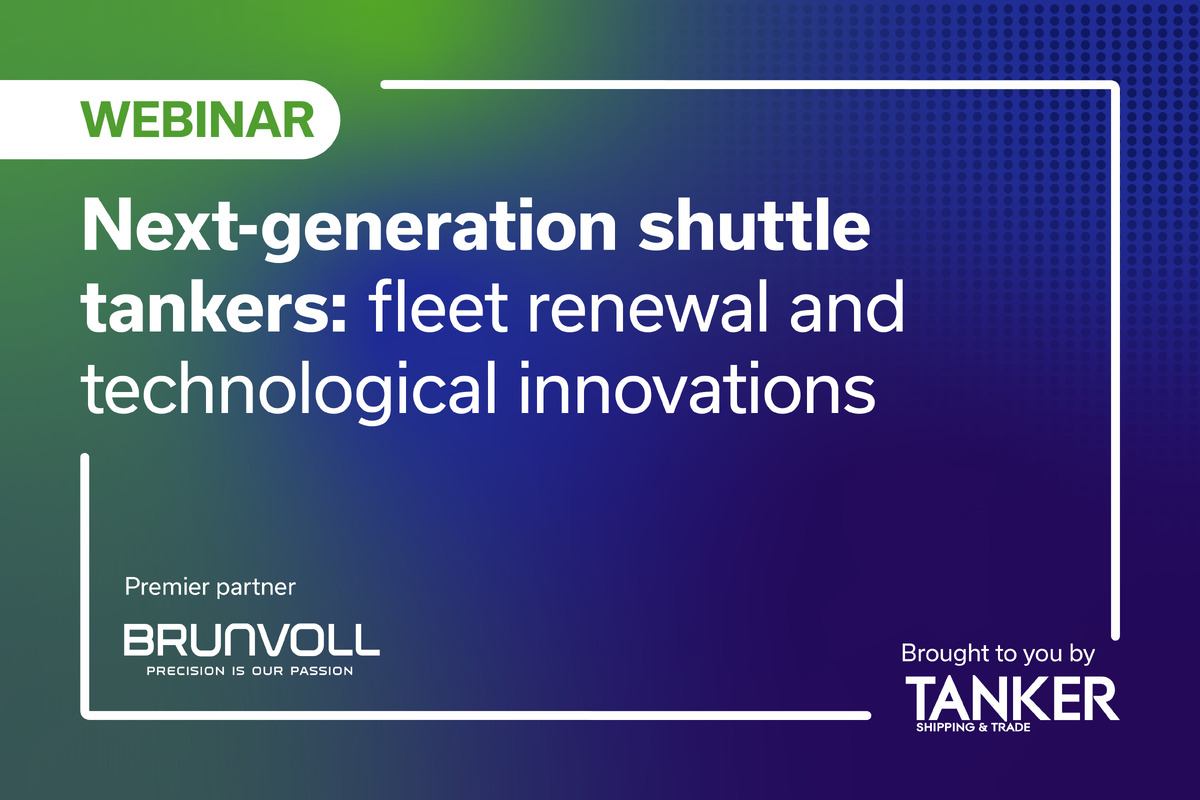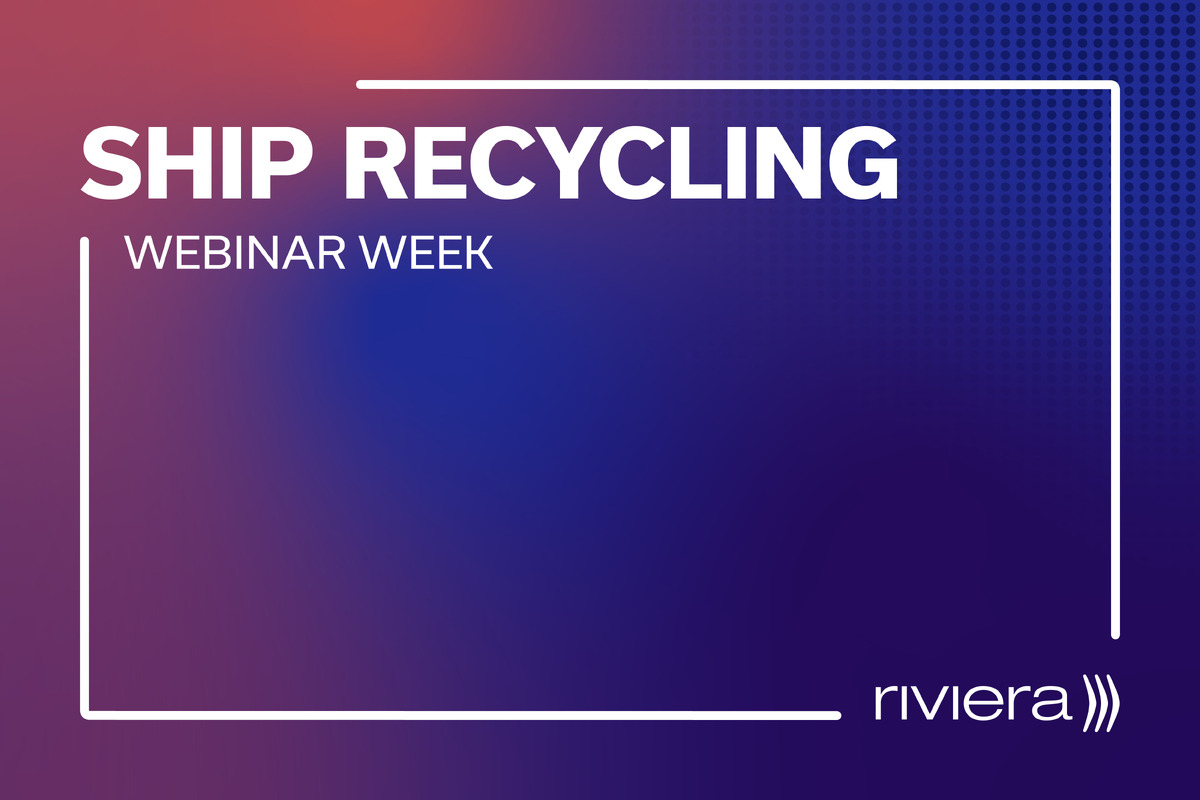Business Sectors
Events
Marine Coatings Webinar Week
Contents
Shipping’s virtual reality is becoming more realistic
The modern generation of simulators is capable of replicating the controls and handling of actual vessels and realistic representations of situations with a degree of realism, which under intense training situations is almost indistinguishable from the real thing.
An example of this is provided by Maersk Line’s training of officers for its Triple-E container ships at Force Technology’s simulator centre in Lyngby, Denmark. Maersk released a video of some of the reactions of officers who talked of the big difference in steering the vessels because of their twin-skeg configuration and lack of stern thrusters. The officers praised the realism of the training, which included the vibration of the ship and the sound of the wind.
The facility that Maersk’s officers are trained with is a full-mission bridge simulator. However, navigators are not the only crew catered for as there are simulators for virtually every conceivable shipboard task, from the engineroom, through dynamic positioning (DP) to crane operation.
Few would argue that the two leaders in simulation are Norway-based Kongsberg and Russia’s Transas Marine. Transas claims that with around 6,000 simulators in operation it has a 45 per cent market share. In June, the company reported that its products were at the heart of a new simulation centre launched at the Wavelink Maritime Institute in Singapore. The centre is a training arm of the Singapore Maritime Officers’ Union (SMOU) and is one of the first few shipping institutes in the city state to house four different types of simulators in one location.
The simulation centre, which cost US$4 million, has a class of 16 workstations to train ecdis operations. A main bridge with 240-degree visualisation and a secondary bridge with 120-degree visualisation are based on the latest Transas NTPRO 5000 software and will be used for ship handling training and certification. An integrated engineroom and liquid cargo simulator class of 20 work stations will contribute to training engineering watchkeeping personnel. As well as providing a training facility, SMOU will be using the centre to promote seafaring as a career.
“Traditionally, seafaring skills are very much time-based learning; that is, the longer you work on board a ship, the better skills you have,” SMOU general secretary Mary Liew said. “But now with simulation training, the cadets and officers’ skills are accelerated with real-time feedback in a risk-free environment. They therefore become better officers, have better jobs and better lives. It is a win-win situation for them and the shipping companies.”
Transas secured another order from Georgia’s Batumi State Maritime Academy for a full-mission offshore simulator. It has 270 degrees of visualisation and is based on Transas NTPRO 5000 software, and will be used for training in DP operations. The training course will be accredited by the Nautical Institute.
As part of the project, Transas will develop simulator areas for the three main Georgian ports of Batumi, Poti and Kulevi. In addition, the simulator will use the next generation universal hardware solutions. The use of touchscreen technology, together with the dedicated hardware, makes it possible to use virtually any controls on the bridge without compromising training realism. It will also give the academy an additional functionality for training crews in ice navigation operations.
In July, the importance of simulator training was put in perspective when Japanese classification society ClassNK and Transas signed a memorandum of understanding. According to the agreement, ClassNK and Transas will jointly develop new standards, rules, procedures and guidelines related to the classification of maritime simulators. New requirements will address the need for improved quality of both traditional and special areas of training, such as offshore, liquefied natural gas carrier, tug and vessel traffic operations.
July also proved a fruitful month for Kongsberg, beginning with a breakthrough contract for its first full-mission simulator to Canada. Kongsberg GlobalSim’s deal with the Maritime Employers Association of Montreal covers the supply of several K-Sim lift training simulators for heavy-lift port equipment. The system will include training modules for seven different types of heavy-lift equipment, and will feature three separate student-training stations to expand the training programme in Montreal.
The centrepiece of the system will be a full-mission simulator cabin featuring dynamic motion, authentic controls and an immersive visual environment. Alongside the main trainer, the contract will include two more student stations: a K-Sim lift essential and a K-Sim lift portable desktop system. All three student stations will be capable of training operators of ship-to-shore, rubber-tyred gantry, ship pedestal and mobile harbour cranes, as well as commercial reach stackers, 5K warehouse forklifts and empty container handlers.
Two days after the Montreal contract, The Arctic University of Norway (UiT), selected Kongsberg Maritime to provide upgrades and extensions of existing ship’s bridge simulators for navigation and DP training, including human factor studies. As part of its new priority programme, the university’s maritime faculty will move into a new technology building, which is specially designed to house the extended simulators.
Kongsberg was also awarded a contract for the extension of the existing main ship’s bridge simulator with a new six degrees of freedom motion platform, more visual channels and integration with a DNV class A DP simulator.
UiT will offer a wide range of courses, including ice navigation, ice management, emergency, search and rescue, and operations in the Arctic and harsh environments. The university will also be using the simulators in studies related to maritime operations, such as human factors, fatigue studies, subsea research and seamanship/organisation development including ice-management studies.
Kongsberg will also be delivering what it described as the world’s most advanced offshore heavy-lift crane simulator to the Heerema Marine Contractors (HMC) Academy, in Leiden, the Netherlands, in September 2015. The K-Sim offshore simulation platform is intended to enhance crane operator training and the safe, efficient implementation of heavy-lift operations.
HMC’s requirement was to develop a system that could train the most competent crane operators and conduct detailed pre-mission training for heavy-lift projects. The scope of supply includes two offshore crane operator domes and a DNV class A bridge with K-Sim DP simulator, which is based on the same Kongsberg K-Pos DP systems used on HMC’s vessels. To achieve highly realistic training, the simulator will feature detailed models of three HMC deepwater construction vessels – Thialf, Balder and Aegir – in addition to several barges and a supply vessel.
Supporting HMC’s plans to use the simulator for project planning, testing and verification, Kongsberg is developing a set of library objects and models of offshore installations and equipment used for simulating specific heavy-lift projects. Also included in the delivery is an extensive instructor and debrief system and two deck operator trainers, designed to train for communications and teamwork between the crane operator and deck operators.
Fidena orders Nautis simulators for three Mexican schools
VStep distribution partner Edutelsa has secured a contract to supply simulators to three Fidena Maritime Schools in Mexico. Fidena is replacing its old simulator technology with DNV GL-certified Nautis simulators.
The institution has three nautical academies in Mazatlan, Tampico and Veracruz, while its headquarters are in Mexico City. Fidena is the only institution in Mexico to offer higher level study programmes for maritime industries.
Fidena has purchased three Nautis class A, full-mission bridge simulators and three tug simulators for each of its nautical schools. The bridge simulators have 270 degrees of horizontal visualisation and are compliant with DNV GL and IMO requirements for seafarer training.
The tug simulators are high-performance desktop trainers with 120-degrees horizontal fields of view. VStep will include programs to simulate the environments around Vera Cruz, Altamira, Lazaro Cardenas and Manzanillo for training on these simulators.
Seagull and Videotel release CBT titles
Seagull has introduced the first in a series of new computer-based training (CBT) courses covering shipping operations. The introduction to bulk carriers and liquefying cargoes training modules provide advice on the safe handling of cargo on bulkers and gas ships.
The Norwegian company plans to release 10 more CBT titles during the rest of this year and into 2015, Seagull managing director Roger Ringstad said. “Our continually expanding series of modules dedicated to the many various disciplines of the international maritime industry underscores our commitment to helping users achieve best practice and maintain safe and environmentally friendly operations.”
In addition to the two modules on bulk carriers, Seagull has made a significant contribution to the understanding of risks in the offshore industry with three new titles. They cover safe working at height, anchor-handling operations and guidelines for offshore marine operations.
Meanwhile, Videotel has released a new CBT course covering noise and vibration, which coincides with the new legal requirements to reduce noise on ships. The rules came into effect with the adoption of the new Solas regulations on 1 July 2014, setting mandatory maximum noise level limits for machinery spaces, control rooms, workshops, accommodation and other spaces on board.
“Noise and vibration controls are an essential part of good practice in the onshore workplace and we are delighted that those at sea will soon be legally entitled to the same protection,” Videotel chief executive Nigel Cleave said.
“Many seafarers are often unaware of the health implications following excessive experience of these hazards. Often, the consequences are felt only gradually, passing unnoticed until the individual realises they are having difficulty hearing, or are suffering impairment of fine motor skills.”
The Noise and Vibration – The Forgotten Hazards program is available as an interactive DVD, or can be installed on the Videotel on Demand training systems on ships. It sets out the sound levels that seafarers can safely be exposed to and emphasises the importance of wearing ear protection and of following company procedures for working safely with handheld vibrating equipment. Videotel was acquired by KVH Industries in July.
Going beyond basic training through simulation
Simulators are an ideal platform for individual and bridge team training, but they are now beginning to be used for extended multi-vessel training and for psychological and character testing. An example of the extended training available took place in June at a mass rescue simulation exercise within the International Maritime Mass Rescue Conference 2014, held by the International Maritime Rescue Federation (IMRF).
The conference was hosted by the Swedish Sea Rescue Society (SSRS). The event used the simulator facilities of both the Chalmers University of Technology and the Swedish Maritime Administration. Both organisations use the latest Transas navigation simulator NTPRO 5000.
To run the exercise, both simulator facilities were interconnected on root level, creating a large complex simulator consisting of five full-mission bridges and two debriefing rooms. The objective of the exercise was to demonstrate a methodology of how to co-ordinate, communicate and act during a mass rescue operation.
The simulator bridges were manned by real masters and pilots, with rescue professionals controlling the VHF radios for target ships and rescue centres. The exercise was monitored in real-time on instructor monitors and on selective visual cameras on projector screens. The debriefing was co-ordinated by SSRS personnel.
IMRF chief executive Bruce Reid said the simulation provided for the mass rescue conference exceeded anything the organisation expected. “The ability to move between the five bridge simulations and gain the varying perspectives the skippers were dealing with, gave many of the shore-based search and rescue practitioners attending the conference a better appreciation of the challenges mass rescue operations pose on the water,” he said.
Using simulators for research is a new departure, but one that could have benefits in identifying and overcoming the psychological limitations of navigators. Marine Electronics & Communications discussed this possibility with Tetyana Nezavitina, who had carried out some research under the auspices of the Ukrainian Research Institute for Medicine of Transport, in Odessa, Ukraine.
A pilot project on stress management training using Transas simulation equipment is being developed by seafarer training centres in Ukraine and in the UK in collaboration with research institutions, Dr Nezavitina said. The project is based on previous research on the evaluation of resistance to work-related stress in marine navigators.
As a part of this research, the physiological and psychological covariates of adaptation capacity and degree of professionally essential qualities of navigators were investigated during the final examination of marine cadets on radar-tracking simulators. One of the objectives was to understand the influence of the considerable intellectual loadings and emotional stress on the dynamics of efficiency in the navigator’s occupational activity.
The study highlighted that risk tolerance as a personal characteristic has great value for psychological forecasting of the decision-making process in unpredictable situations. Dr Nezavitina highlighted the fact that performing logical operations was found to be quicker in people who preferred their work to be reasonably risky than people who preferred to avoid risk.
She suggested that further psychological research of navigators during radar simulation training should provide potential for better understanding of the human element in safe and efficient performance. At present, the aspects of stress management and simulations are separate subjects.
The practical application of the research project would be to combine these professional and psychological training modules into one integrated process. This would increase occupational stress resistance of navigators as part of their professional training on radar simulators.
In a separate development to Dr Nezavitina’s work, but along similar lines, will be the studies planned at The Arctic University of Norway (UiT) on the new Kongsberg simulator. In addition to training, the university will be using the simulators in studies related to maritime operations such as human factors, fatigue studies, subsea research and seamanship/organisation development including ice management studies.
“The simulator upgrade will contribute to raising the quality of seafarers educated at UiT, and strengthen our position within advanced studies in human factors and the maritime and polar environment,” UiT lecturer Bjørn Batalden said. MEC
Related to this Story
Events
Marine Coatings Webinar Week
Maritime Environmental Protection Webinar Week
Ship Recycling Webinar Week
© 2024 Riviera Maritime Media Ltd.

